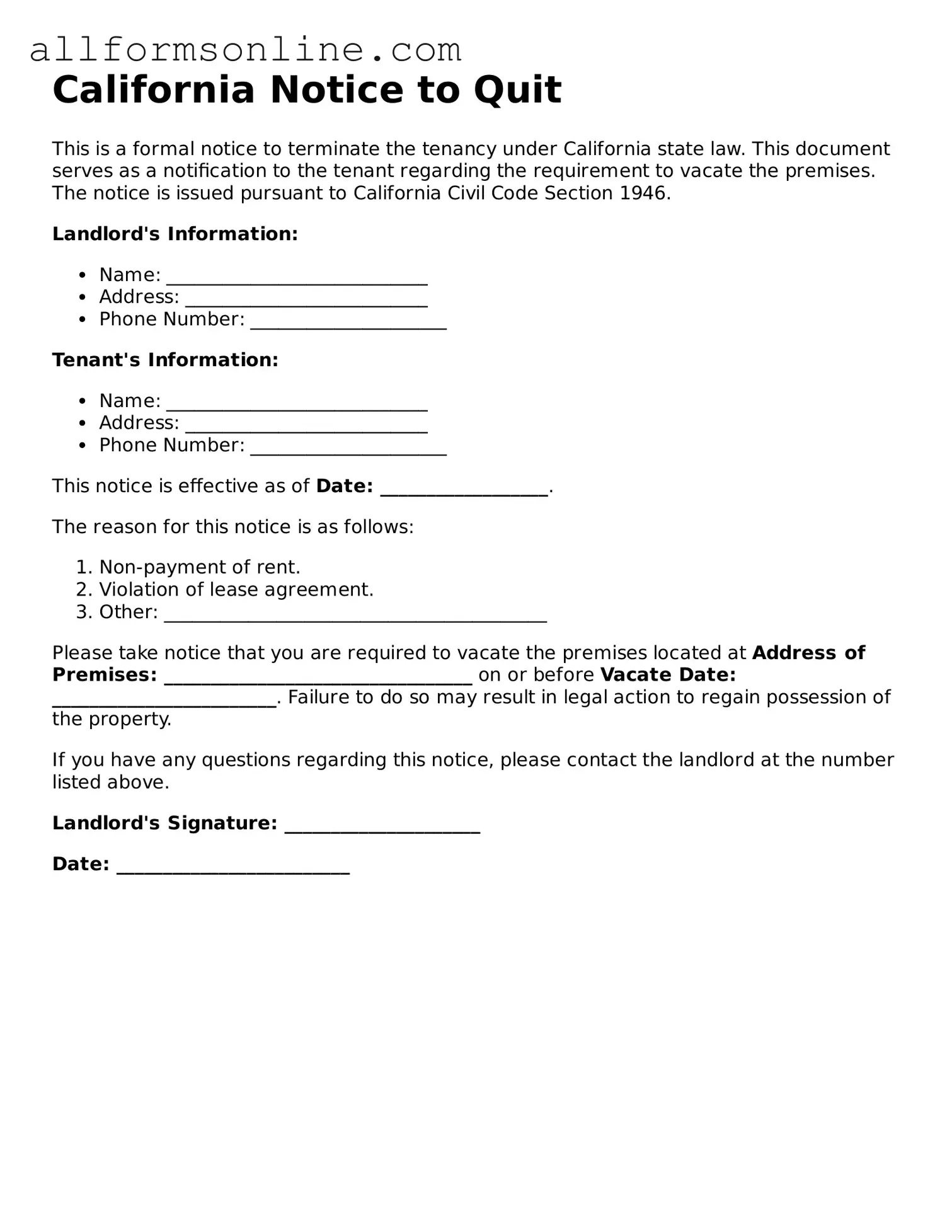What is a California Notice to Quit form?
The California Notice to Quit form is a legal document used by landlords to inform tenants that they must vacate the rental property. This notice is typically issued when a tenant has violated the terms of the lease agreement or has not paid rent. The form outlines the reason for the notice and specifies a deadline by which the tenant must leave the premises.
How long does a tenant have to respond to a Notice to Quit?
The timeframe for a tenant to respond to a Notice to Quit depends on the reason for the notice. If the notice is for non-payment of rent, the tenant usually has three days to pay the overdue rent or vacate the property. For other lease violations, the tenant may have a different timeframe, often ranging from 3 to 30 days, depending on the specific circumstances and the terms of the lease.
What should a tenant do upon receiving a Notice to Quit?
Upon receiving a Notice to Quit, a tenant should carefully read the document to understand the reasons for the notice and the required actions. It is advisable to take the notice seriously and respond promptly. If the tenant believes the notice is unjust, they may want to seek legal advice. Additionally, the tenant should consider addressing any issues mentioned in the notice, such as paying overdue rent or correcting lease violations.
Can a landlord evict a tenant without a Notice to Quit?
No, a landlord cannot legally evict a tenant without first issuing a Notice to Quit. The notice serves as a formal warning and provides the tenant with an opportunity to rectify the situation before eviction proceedings can begin. Following the notice period, if the tenant does not comply, the landlord may proceed with legal actions to evict the tenant through the court system.
Is a Notice to Quit the same as an eviction notice?
A Notice to Quit is not the same as an eviction notice, although they are related. The Notice to Quit is the initial step that a landlord takes to notify a tenant of the need to vacate. If the tenant does not comply with the Notice to Quit, the landlord may then file for eviction, which is a legal process that requires court involvement to remove the tenant from the property.
